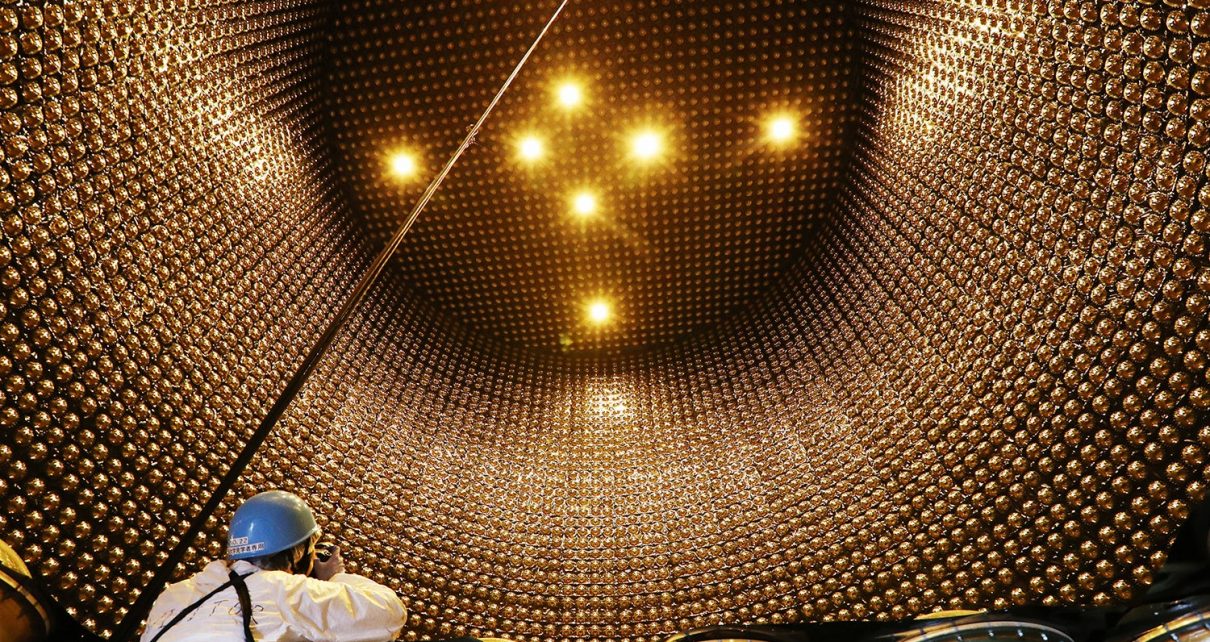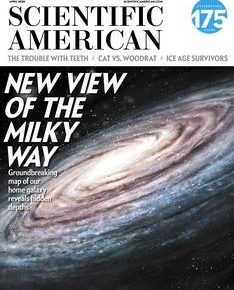We may be a big step closer to cracking one of the universe’s biggest and most fundamental mysteries.
Scientists think that, when the universe was born nearly 14 billion years ago, it contained equal amounts of matter and its bizarro counterpart, antimatter. Antimatter particles have the same mass as their “normal” cousins but opposite electrical charges. Perhaps the most famous such duo is the electron (normal, negatively charged) and the positron (antimatter, positively charged).
When matter and antimatter particles collide, they annihilate with perfect efficiency, converting into 100% pure energy. (This handy fact is why sci-fi writers love putting matter-antimatter engines on their starships.)
And therein lies the mystery: If there were an equal number of particles and antiparticles at the universe’s birth, they should all have found and annihilated each other, leaving our cosmos utterly bereft of each. But that obviously didn’t happen, as your existence clearly shows. There ended up being a tiny excess of matter over antimatter—just a single particle per billion matter-antimatter pairs.
Physicists have gathered some clues about this excess-matter mystery over the years. For example, in the 1960s, they figured out that quarks and antiquarks don’t behave in exactly the same way. But this violation of “charge-conjugation parity-reversal symmetry,” or CP symmetry for short, wasn’t substantial enough to explain the matter-antimatter disparity.
A different type of symmetry violation just might be, however. After all, quarks — the building blocks of protons and neutrons—aren’t the only subatomic particles out there. They have relatives known as leptons, a category that includes electrons, muons, tau particles and neutrinos. (Quarks and leptons, in turn, are fermions, one of the two main categories of subatomic particles. The other category is bosons, which include force-carrying particles such as the photon, the gluon, the Higgs and the as-yet unconfirmed graviton.)
A new study looked hard for signs of CP symmetry violation in neutrinos and came up with some intriguing results. The data come largely from the T2K project, which generates beams of neutrinos or antineutrinos, depending on the experimental setup, at the Japan Proton Accelerator Research Complex in the city of Tokai.
The vast majority of the beam particles zoom through Earth like our planet’s not even there. (Neutrinos, nicknamed “ghost particles,” are weird that way.) But a few get flagged by an underground detector at Kamioka Observatory, 183 miles (295 kilometers) from Tokai. This detector is a tank filled with 55,000 tons (50,000 metric tons) of very pure water. When a neutrino interacts with a neutron in the tank, a muon or an electron can be produced. And sensitive equipment picks these secondary particles up.
Such detections contain a lot of information. For example, as neutrinos travel, they oscillate between three different “flavors”: electron, muon and tau. (Yes, the flavor names are confusing, given that electron, muon and tau are also monikers for different particles. But particle physics is confusing!) And the flavor type determines what secondary particle is produced during a collision with a neutron.
The T2K Collaboration analyzed data gathered by the project from 2009 to 2018, as well as observations from similar experiments. In the new study, which was published online today (April 15) in the journal Nature, the researchers report that they found evidence that neutrinos and antineutrinos oscillate in different ways.
“The results exclude CP conservation (that is, they suggest that CP violation has occurred) at a 95% con- fidence level, and show that the CP-violating parameter is likely to be large,” physicists Silvia Pascoli and Jessica Turner—of the University of Durham in England and the U.S. Department of Energy’s Fermilab in Illinois, respectively—wrote in an accompanying “News & Views” piece in the same issue of Nature.
“These results could be the first indications of the origin of the matter–antimatter asymmetry in our universe,” added Pascoli and Turner, who were not involved in the new research.
To be clear, however: The results themselves are not a convincing demonstration of CP violation with neutrinos and antineutrinos.
“We are seeing some indication,” study lead author Atsuko K. Ichikawa, of Kyoto University in Japan, told Space.com via email. “The present result is an important step to observe CP violation.”
Taking the next step will require more data, Ichikawa stressed. But there’s good news on this front: Several next-generation neutrino experiments are already in the works. For example, Japan’s T2HK, which will be similar to but more powerful than T2K, was officially greenlit in February, Pascoli and Turner noted. And the Deep Underground Neutrino Experiment (DUNE), which will employ a beam at Fermilab and detectors there and in South Dakota, is scheduled to come online in the mid-2020s.
T2HK and DUNE will “provide complementary techniques and measurements,” Pascoli and Turner wrote. “They will probably give us a definitive answer in the quest for CP violation in the next 15 years.”
Copyright 2020 Space.com, a Future company. All rights reserved. This material may not be published, broadcast, rewritten or redistributed.



